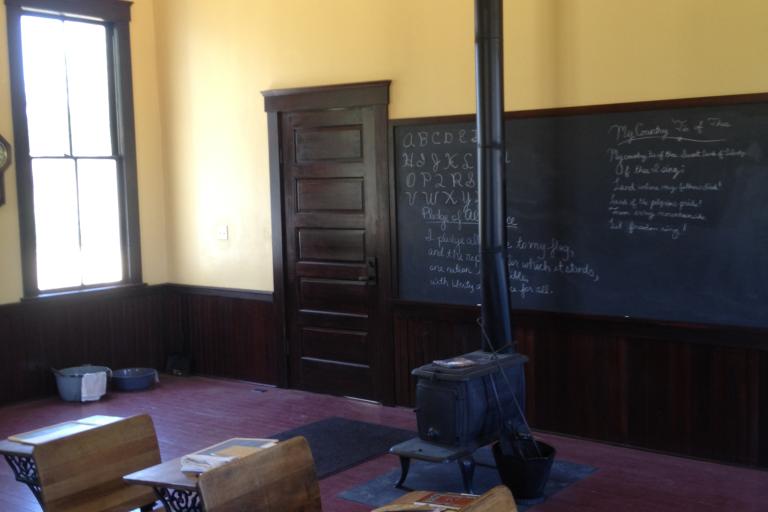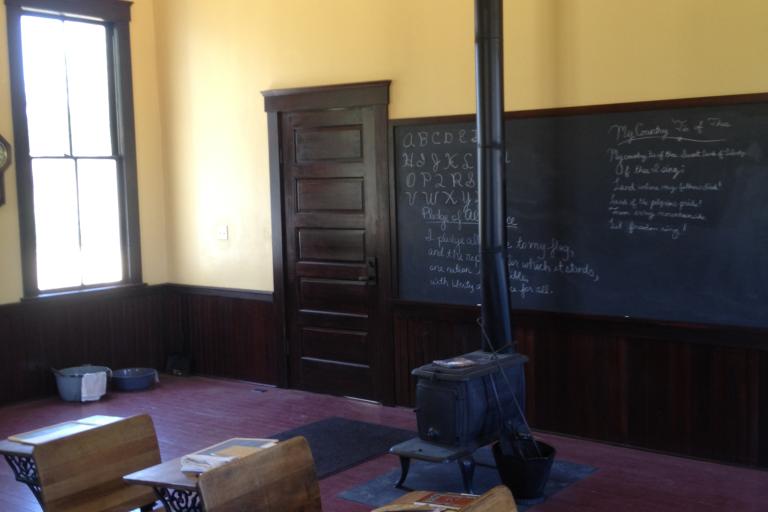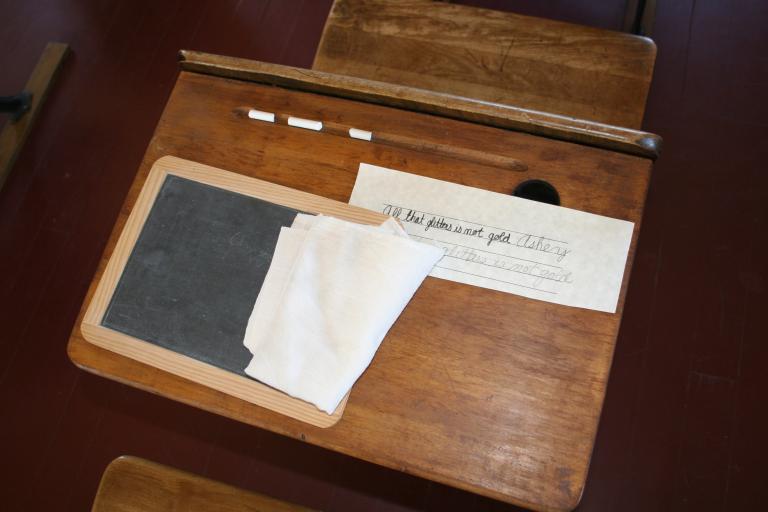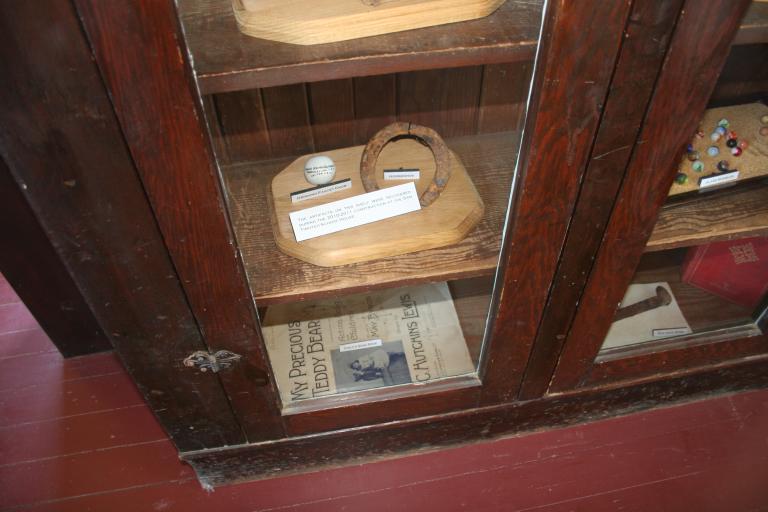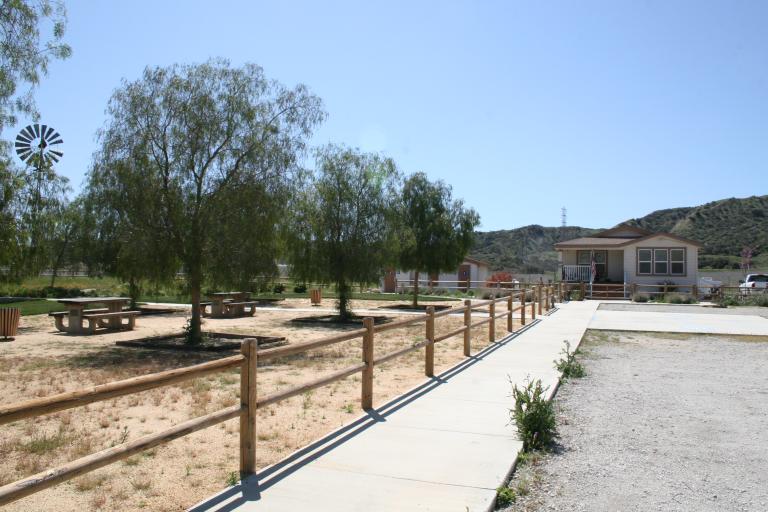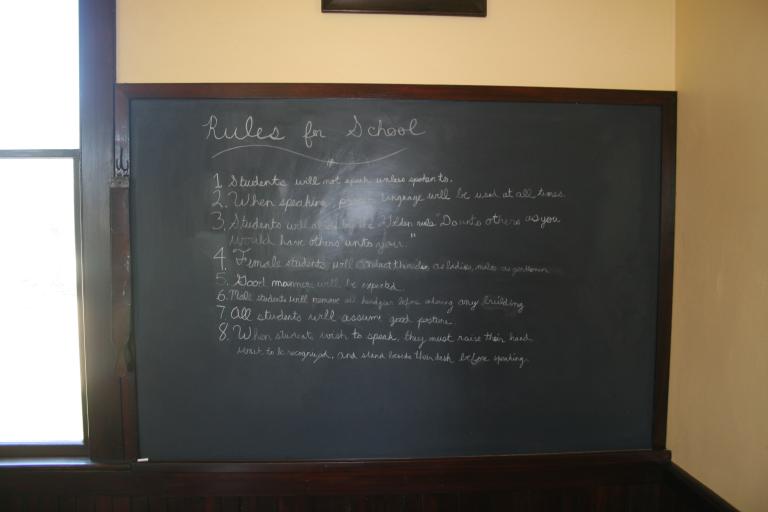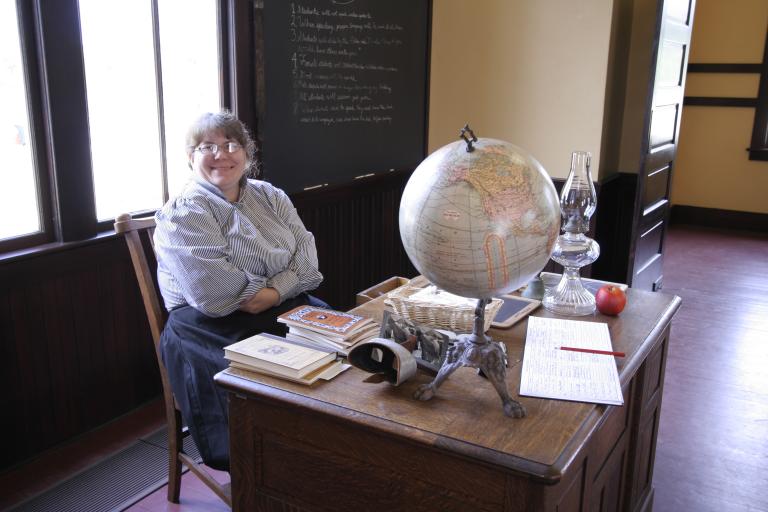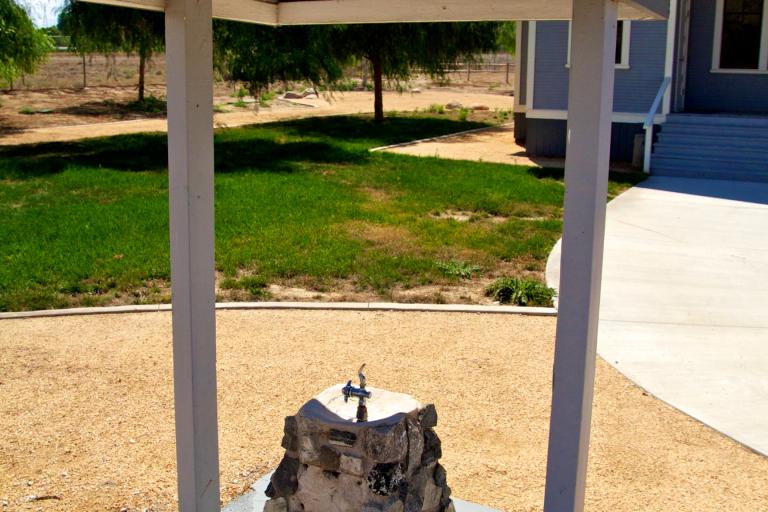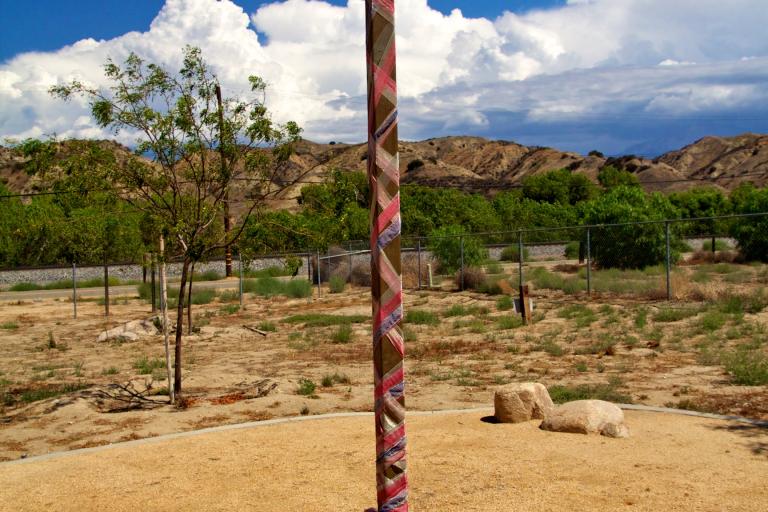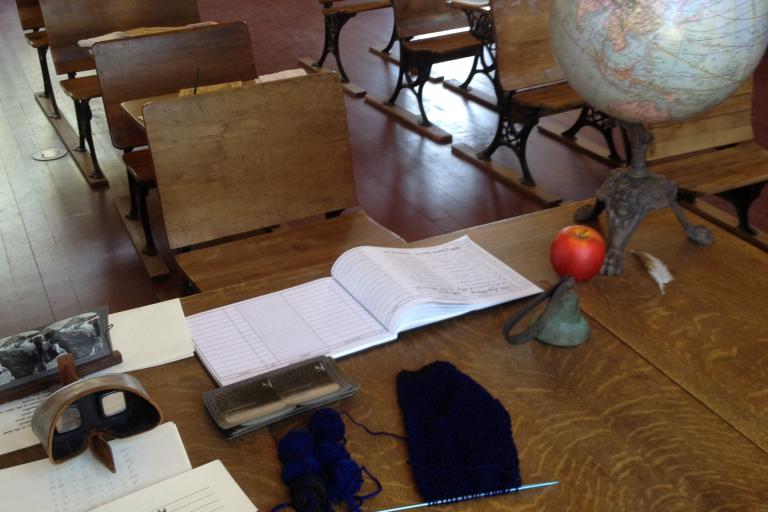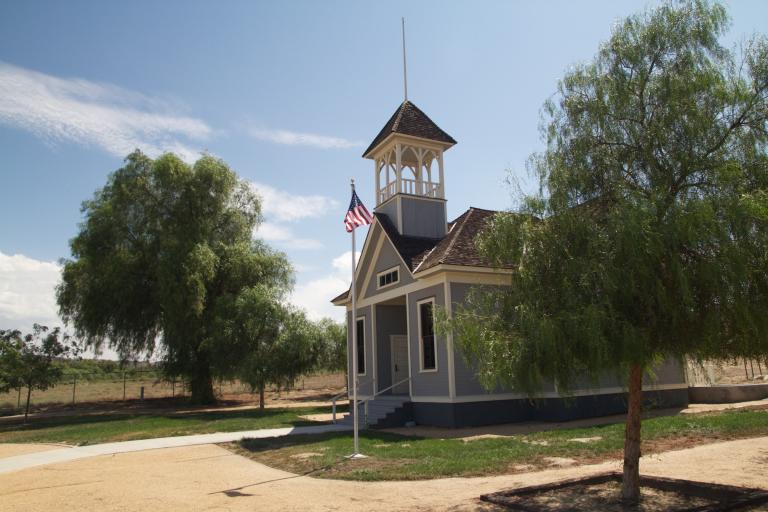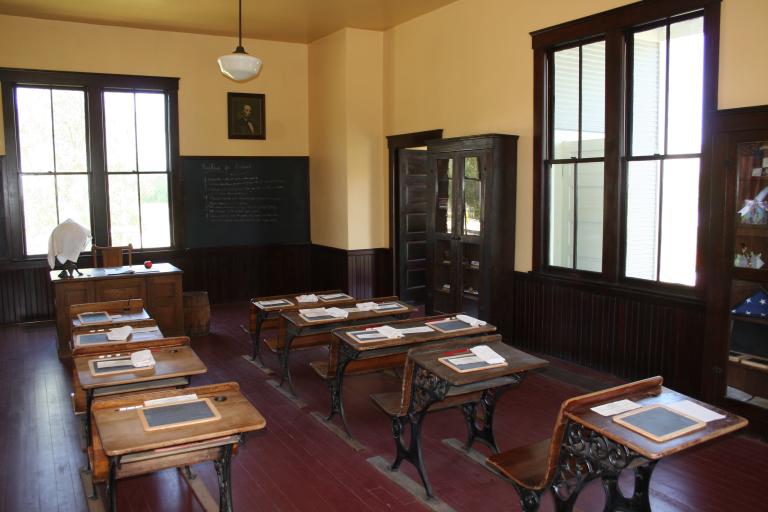About San Timoteo Schoolhouse
The San Timoteo Schoolhouse is one of the District’s three nationally- registered historic sites. Situated in picturesque San Timoteo Canyon, between Redlands and Beaumont, the schoolhouse has witnessed much in its 125+ year history, and now sits ready to welcome a new generation of visitors.
San Timoteo Canyon has been a route of travel for thousands of years. Local Indians used the canyon to travel between the San Bernardino Valley and the desert regions to the east for trade. This pattern continued with the influx of Europeans and Americans in the 1800s. Just after San Bernardino was founded by the Mormons in 1851, non-Mormons began to settle in San Timoteo Canyon by setting up ranches. Over the next 50 years, several different families took up residence in the canyon, and a series of homesteads and ranches could be seen throughout the area.
Field trips to San Timoteo Canyon Schoolhouse are an adventure in learning as students step back more than 100 years!
San Timoteo Canyon Schoolhouse Heritage Education Program Brochure
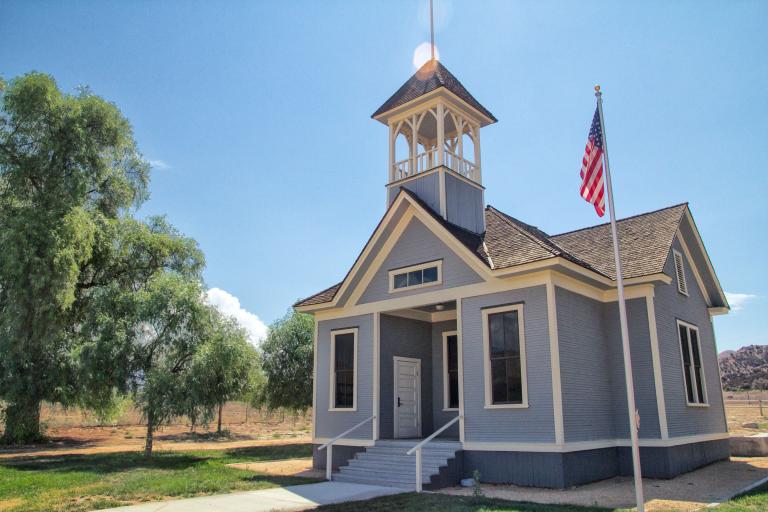
Location
31985 San Timoteo Canyon Rd, Redlands, CA 92373
(951) 922-9200 or (800) 234-PARK (7275)
Site Hours
10am-2pm┃ First and Third Saturday of Every Month
Site Fees
Day Use
$4 per adult and $3 per child (12 and younger).
Pets
$1 per dog, per day.
Site History
The San Timoteo Schoolhouse is one of the District’s three nationally- registered historic sites. Situated in picturesque San Timoteo Canyon, between Redlands and Beaumont, the schoolhouse has witnessed much in its 125+ year history, and now sits ready to welcome a new generation of visitors.
San Timoteo Canyon has been a route of travel for thousands of years. Local Indians used the canyon to travel between the San Bernardino Valley and the desert regions to the east for trade. This pattern continued with the influx of Europeans and Americans in the 1800s. Just after San Bernardino was founded by the Mormons in 1851, non-Mormons began to settle in San Timoteo Canyon by setting up ranches. Over the next 50 years, several different families took up residence in the canyon, and a series of homesteads and ranches could be seen throughout the area.
Obviously one of the amenities that was needed was a school, and from the 1850s to the 1880s, schooling in the area was conducted in barns, adobes, and even just out in the open. By the early 1880s, though, the residents of the area wanted something better for their children. At this point, two men, Eugene Vandeventer and John Frink, began to take action. John Frink, and his brother Horace, were major landowners in the canyon and had been freighters through the area. On February 21, 1882, John Frink gave an area described as “one acre and two square rods” to the San Timoteo School District for “use as a building lot and school ground for the public school in said district.” Frink stipulated that if a school was not constructed within one year, ownership of the parcel would revert back to him.
Another ranch owner to the east of the Frinks was Eugene Vandeventer. With a piece of land for a school site secured, Vandeventer began construction on the schoolhouse. Using all Douglas Fir (which indicates that the wood probably came from the San Bernardino Mountains), Vandeventer built a moderate-sized building consisting of a main room for instruction and two ante-rooms in the front. The building was complete by early 1883, for the San Timoteo School District issued a warrant for the repair of the building in March of that year.
Oral histories with some past students have helped to bring out a myriad of stories about the building. The ante-rooms were used as cloak rooms – the eastern room for the girls and the western for the boys. At class time, the teacher would ring a hand bell, and the students would line up outside their respective rooms. They would leave their coats and lunches in the small rooms, and then enter the main school room. Grades K-8 were taught there by one teacher, whose desk was generally on the west side. The school desks were not fixed to the floor but were on runners so that they could be moved. Usually on Saturday nights, the desks were moved to the side of the room and dances were held with entertainment provided by some of the older members of the community. On Sundays, church services were held, making the schoolhouse serve as a school, community center, and church.
During this time, the property also boasted a well which was dug to the southeast of the schoolhouse. Some play equipment was added later. To facilitate the large percentage of children who would have ridden horses to school, stable structures were an integral part of the parcel. At one time, a stable built of old railroad ties was constructed just to the southwest of the main building, whereas later another structure was completed to the northeast.
An interesting sidelight to the history of the schoolhouse occurred on May 2, 1893, when the building was designated one of the polling locations to determine whether Riverside County should be formed. Many people in the immediate area were opposed to the prospect, and a few took matters in their own hands and forcibly evicted the official election committee that was sent to staff the polling place and bring in the votes. This action, though, did not deter the election nor would it have changed the results, and Riverside County came into being a week later on May 9.
Sometime around 1920, several changes were made. First, a series of California Pepper trees were planted on both the west and east sides of the building. In the building, most of the windows in the main room were moved to the south wall. This was at the behest of the county’s Superintendent of Schools, who directed that students should have sunlight coming across their left shoulders when they learn to write. A concrete restroom facility was added to the southwest (in the area that once housed the railroad-tie stable), which would have superceded some outhouses that were undoubtedly there from the beginning.
The San Timoteo Schoolhouse was in use as a school until 1937. At that time, the San Timoteo School District was merged into the Beaumont School District, which in turn closed the outlying school. Students from San Timoteo Canyon were transported into Beaumont for schooling. From that point until the late 1980s, the schoolhouse was used for Sunday school purposes and for a community center.
By the late 1980s, the Beaumont School District was trying to divest itself of several assets including the San Timoteo Schoolhouse. Several people became concerned about the schoolhouse, its rapidly deteriorating condition, and the potential for it to be a victim of vandals. After a protracted negotiation, the Beaumont School District sold the schoolhouse to the Riverside County Parks Department on August 10, 1993, officials of the Department having been convinced of the need to try to preserve what had become one of the oldest still-standing structures in Riverside County. Plans were drawn up to begin restoration of the building, but these plans fell victim to the hard economic times of the early 1990s.
It was not until 2002 that renovation of the building was begun. Over a period of 5 years, a new well was dug, a new foundation was poured for the building, and the interior was stripped and cleaned of nearly 60 years of accumulated bat wastes. Once restoration commenced, new plaster, woodwork, doors, and windows were added to bring the schoolhouse back to the way it looked when it opened more than 100 years ago. Today, the San Timoteo Schoolhouse sits poised to usher in a new era – one that will teach today’s children what life and schooling was like for the generations before them.
References
- Christian, Peggy. Historic San Timoteo Canyon. Sagebrush Press, Morongo Valley, California: 2002.
- Frink, John. Deed to San Timoteo School District. San Bernardino County Deed Book 30, pp. 578-579
- Lech, Steve. Along the Old Roads – A History of That Portion of Southern California That Became Riverside County, 1772-1893.
- Privately printed by the author, Riverside, California: 2004.
- Marshall, Bill (former student at the San Timoteo Schoolhouse), personal communication with the author: November 26, 2002.
- Riverside County Regional Park and Open-Space District files.


